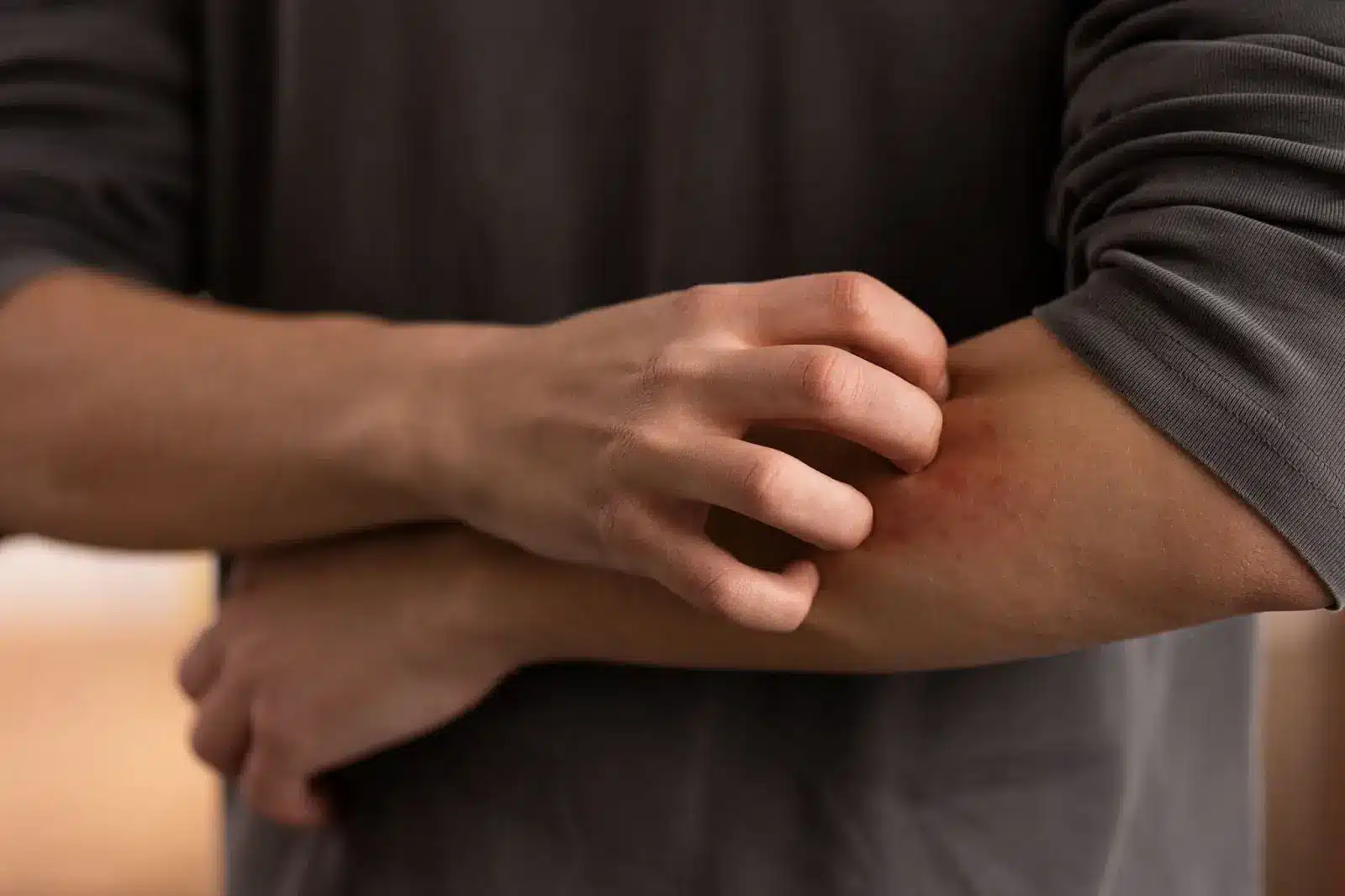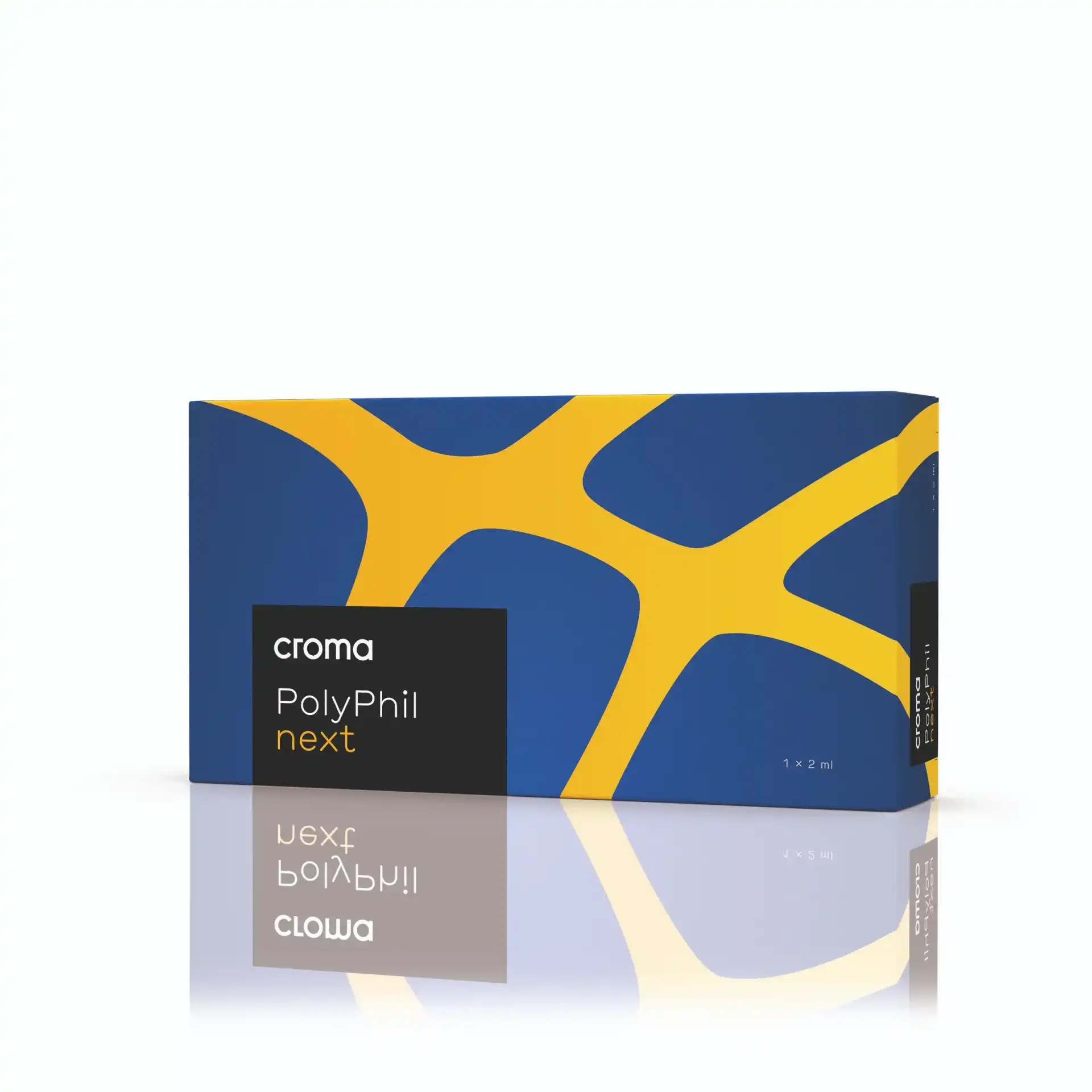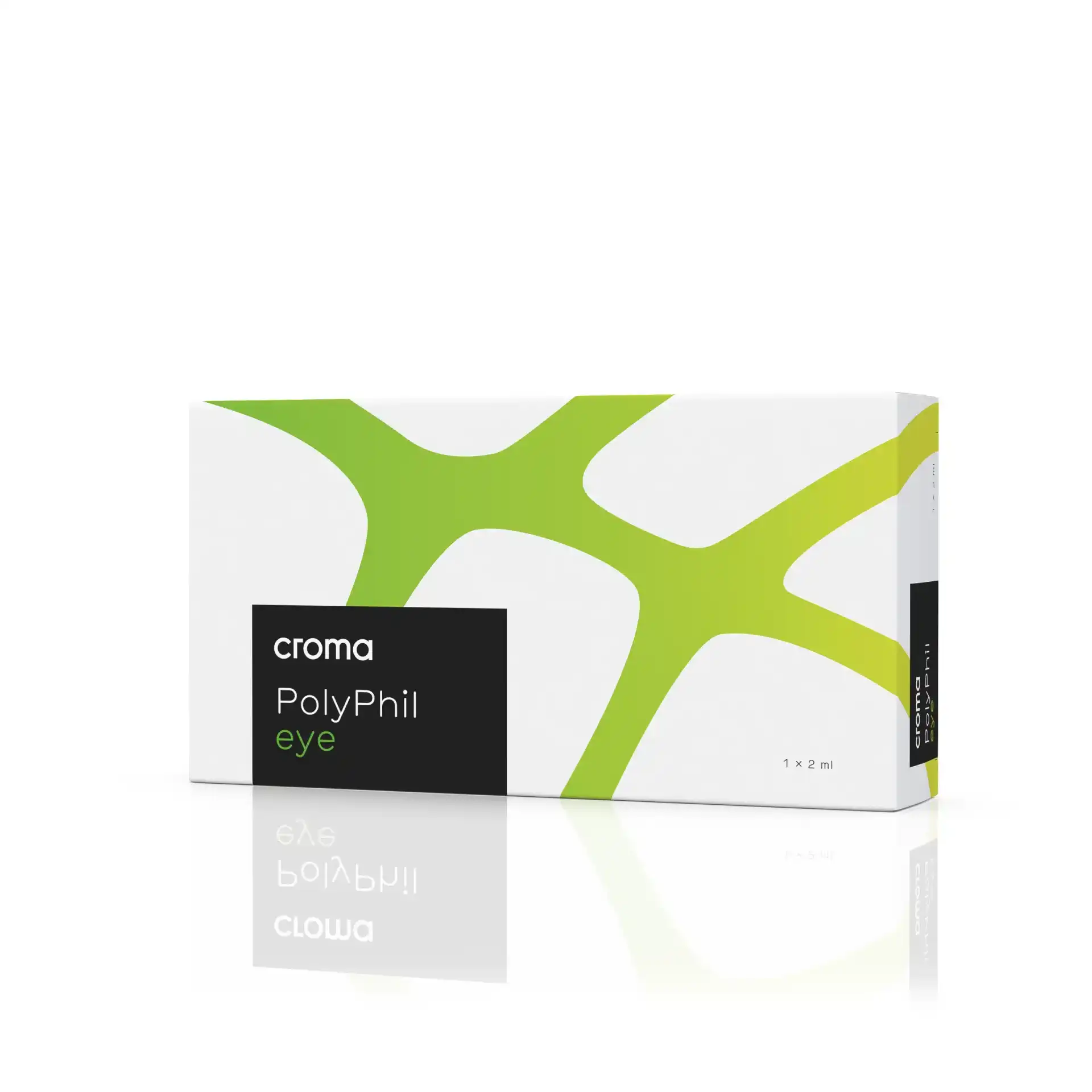Only for Licensed Professionals
Only for Licensed Professionals
.webp)
PhilArt Eye Side Effects – The Complete List
David Fuller
Last Updated On: June 24, 2025
Aesthetic procedures, though generally safe, carry inherent risks that must be understood for both patient safety and satisfaction. Erythema, swelling, bruising, and localized pain are the most commonly reported side effects of injectable skin treatments, with incidence rates ranging from 10% to 35% depending on the product and technique used. While these side effects are typically mild and short-lived, a thorough understanding of them is essential for ensuring a smooth treatment experience.
One injectable gaining attention is PhilArt Eye, a polynucleotide-based injectable specifically designed for the sensitive periocular area. It has become popular for improving skin quality and reducing the appearance of fine lines. However, given the delicate nature of this treatment zone, its safety profile warrants careful consideration.
In this article, we will provide a comprehensive list of potential PhilArt Eye side effects, detailing their severity and how they are typically managed to ensure optimal outcomes.
Key Takeaways
- PhilArt Eye is a polynucleotide injectable designed for the delicate under-eye area, offering skin quality improvement and fine line reduction.
- Common side effects include redness, swelling, mild bruising, tenderness, and itching, which are typically temporary and subside within a few days.
- Rare complications include infection, nodule formation, tissue necrosis, hypersensitivity reactions, and ocular disturbances, though these are infrequent and often result from improper technique or patient-specific factors.
- Proper injection technique and anatomical awareness are crucial to prevent complications, with recommendations for using a fine-gauge needle, microdosing, and careful site marking.
- Patient education is vital for managing side effects and ensuring patient safety, including guidance on aftercare, warning signs, and the importance of follow-up visits.
- Practitioners should perform patch testing on patients with known sensitivities or allergies to minimize risk. They should also schedule follow-up appointments within 1–2 weeks to monitor progress and refine treatment if necessary.
About: Operating since 2016, Med Supply Solutions is known for being one of the industry’s top and trusted suppliers of cosmetic and viscosupplementation products. If you’re looking to buy Croma PhilArt Fillers online, contact our sales department for more information.
Tier pricing
Save 1.44%
6 or more
$137.00 each
Save 2.88%
11 or more
$135.00 each
Save 3.6%
21 or more
$134.00 each
Tier pricing
Save 1.44%
6 or more
$137.00 each
Save 2.88%
11 or more
$135.00 each
Save 3.6%
21 or more
$134.00 each
Common Injection Reactions with PhilArt Eye

PhilArt Eye is widely regarded as a gentle and safe treatment for the delicate under-eye area, thanks to its high-purity polynucleotide (PN) formulation. Its biocompatibility and low protein content make it less likely to trigger immune responses compared to other injectables.
However, like all dermal boosters, minor side effects can still occur post-injection. These reactions are typically temporary and part of the normal healing process. Common injection-related reactions include:
- Redness and Swelling: Slight inflammation at the injection sites is expected as the skin responds to the treatment. These symptoms usually subside within 24 to 72 hours and can be alleviated by using a cold compress.
- Mild Bruising: Tiny capillaries may be disrupted during the procedure, particularly in areas with thinner skin and higher vascularity, such as the under-eye area. Bruising typically fades within a few days to a week, and it is mild enough to be covered with light concealer.
- Tenderness or Mild Itching: Some patients may report a tingling or slightly itchy sensation as the skin regenerates. This is a sign of tissue responsiveness and typically fades within the first few days.
- Firmness or Minor Tightness: As the polynucleotide solution settles and integrates into the skin, patients may notice slight firmness or tightness. This sensation gradually softens as hydration improves and the formula is fully absorbed.
These side effects are easily manageable with standard aftercare protocols, including applying a clean, cold compress, avoiding vigorous activity or makeup for at least 24–48 hours, and keeping the area moisturized with gentle, fragrance-free products. Proper post-injection care ensures that temporary discomfort does not interfere with the overall aesthetic outcome.
Rare Complications & Hypersensitivity

Although PhilArt Eye has a positive safety profile, serious side effects can still occur after getting this treatment. These rare complications are often linked to improper injection technique, unqualified administration, or overlooked patient-specific contraindications. The eye area is anatomically complex and highly vascularized, making it essential for practitioners to exercise heightened precision and caution.
According to Croma PhilArt reviews from clinicians, the product itself rarely causes complications due to its clean polynucleotide (PN-HPT) profile and low protein load. However, mishandling or unsuitable patient selection can lead to adverse outcomes that may require medical intervention. Here are some potential, though rare, complications:
- Infection at Injection Sites: If sterility is compromised, localized infections may develop, presenting as warmth, tenderness, or the presence of pus. This requires prompt medical attention and possible antibiotic treatment.
- Nodule Formation or Localized Lumps: These may occur if the injector places the product too superficially or in excessive quantities. Palpable bumps may persist unless manually dispersed or treated with enzymatic support.
- Tissue Necrosis: This infrequent yet serious complication can result from accidental vascular compression or occlusion. While more common with cross-linked fillers, over-injection in the fragile periorbital area can still pose a risk.
- Hypersensitivity or Allergic Reactions: Though uncommon with polynucleotides, individual immune responses can cause swelling, redness, or rashes. Patients with known sensitivities should get a patch test before treatment.
- Visual or Ocular Disturbances: If injections encroach too close to ocular structures or arteries, patients may report blurred vision, pain, or unusual sensations. Practitioners consider these symptoms as medical emergencies, emphasizing the need for specialized injector training.
Preventing these adverse events hinges on qualified administration. Providers should combine conservative dosing with real-time anatomical assessments. Maintaining open communication with patients, conducting patch tests, and adhering strictly to aseptic protocols further reduce the likelihood of complications.
Technique Tips to Avoid Side Effects of Phlart Eye
Because the periorbital area is both fragile and vascular, the healthcare professional administering the injection must approach the process for PhilArt Eye with precision and care. This region is prone to bruising, swelling, and visible irregularities if not handled correctly. Practitioners report that detailed planning, soft-touch techniques, and stepwise dosing significantly lower the risk of complications. A slow, structured approach allows for both safety and optimal skin regeneration.
- Use a fine-gauge needle (30–32G) or microcannula to reduce trauma and ensure smooth, superficial product delivery without damaging lymphatic channels.
- Pre-mark injection sites based on anatomical landmarks, maintaining at least a 1–2 cm distance from the orbital rim to avoid key vessels and fat pads.
- Begin with microdroplet doses (around 0.01–0.05 mL per point), gradually increasing over a series of sessions depending on tissue response and signs of puffiness.
- Cleanse the area thoroughly, advise patients to avoid makeup for 12–24 hours post-treatment, and encourage them to apply cold compresses at intervals to help control swelling and redness.
- Document dose and technique at each visit, especially for new patients, and recommend a 2-week follow-up to evaluate absorption and any delayed sensitivity.
Following this process ensures a smooth and effective PhilArt Eye treatment with fewer side effects and more consistent results. Prioritizing micro-dosing and anatomical awareness enhances both patient safety and satisfaction.
Patient Education & Risk Management for PhilArt Eye
Educating patients before and after their PhilArt Eye treatment is essential for building trust and ensuring safety. Provide the following aftercare guidelines to help manage side effects and promote healing:
- Avoid eye makeup, heat, sun exposure, and vigorous activity for 48 hours post-treatment.
- Keep the treated area moisturized with gentle, fragrance-free products.
- Follow the practitioner’s advice on applying a cold compress if needed.
Clear instructions reduce patient anxiety and improve adherence to the healing process.
Patients should also be aware of warning signs and know when to seek medical attention. Immediate consultation is necessary if they experience:
- Severe pain
- Heat
- Persistent discoloration
- Changes in vision
Additionally, conduct thorough screenings for fish allergies, autoimmune issues, or active skin infections. Offering patch testing is recommended for those with known sensitivities. Schedule follow-up visits within 1–2 weeks to monitor progress, address delayed effects, and plan any needed refinements.
Conclusion
Understanding the full scope of PhilArt Eye’s potential side effects empowers both patients and practitioners to pursue safer, more satisfying outcomes. While the treatment is widely regarded for its biocompatibility and gentle action, proper technique and patient-specific precautions remain essential.
Ultimately, the success of any injectable treatment lies in preparation, practitioner skill, and clear communication. By carefully screening candidates, educating patients, and adhering to micro-injection techniques, the risk of complications is minimized.
With growing clinical support and cautious optimism from aesthetic providers, PhilArt Eye continues to set a new standard for rejuvenating the under-eye area—safely, effectively, and with long-term aesthetic value.
FAQs
1. What minor side effects should I expect with PhilArt Eye?
Redness, bruising, mild swelling, tenderness, or temporary firmness usually last 24–72 hours and resolve on their own.
2. How common is an allergic reaction to PhilArt Eye?
Extremely rare due to high-purity polynucleotides; however, patch testing is recommended for those with fish or autoimmune allergies
3. Can PhilArt Eye cause vision changes?
Only in sporadic cases of deep or vascularly misplaced injections. Proper injection technique minimizes this risk.
4. How soon can I return to normal activities after treatment?
Most clinicians advise avoiding makeup, sun, and strenuous activity for 24–48 hours. Follow-up at 1 week confirms healing and results.
References
Colon J, Mirkin S, Hardigan P, Elias MJ, Jacobs RJ. Adverse Events Reported From Hyaluronic Acid Dermal Filler Injections to the Facial Region: A Systematic Review and Meta-Analysis [published correction appears in Cureus. 2023 Jun 30;15(6):c125. doi: 10.7759/cureus.c125.]. Cureus. 2023;15(4):e38286. Published 2023 Apr 29. doi:10.7759/cureus.38286
Lee D, Choi H, Yoo K, et al. Assessment of current practices and perceived effectiveness of injectable polynucleotide for enlarged facial pores among cosmetic physicians: A survey-based evaluation. Skin Res Technol. 2024;30(9):e13738. doi:10.1111/srt.13738
Products
Cart
Log In
Newsletter
Subscribe for exclusive offers and updates on new arrivals
Share feedback at:
Working Hours
MON - SUN 9AM to 6PM EST
The Most Popular Brands
Med Supply Solutions
Support
Secure checkout is guaranteed with full adherence to PCI DSS payment standards.
Products listed here are guaranteed authentic and manufacturer-sourced.
Pay easily with trusted providers


*Google and Apple Pay are currently only available via a direct link provided by your account manager.
Copyright 2025. Med Supply Solutions

